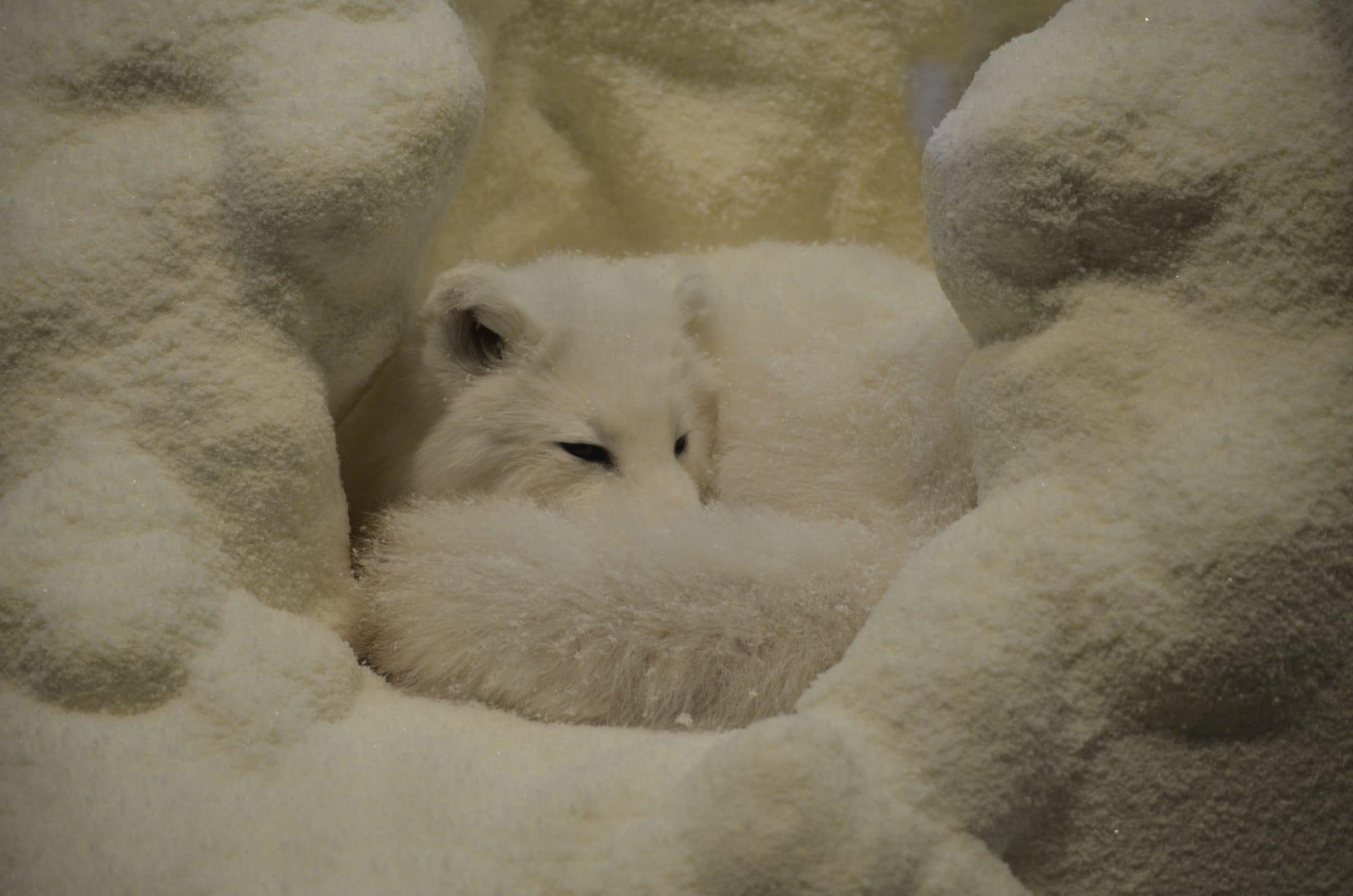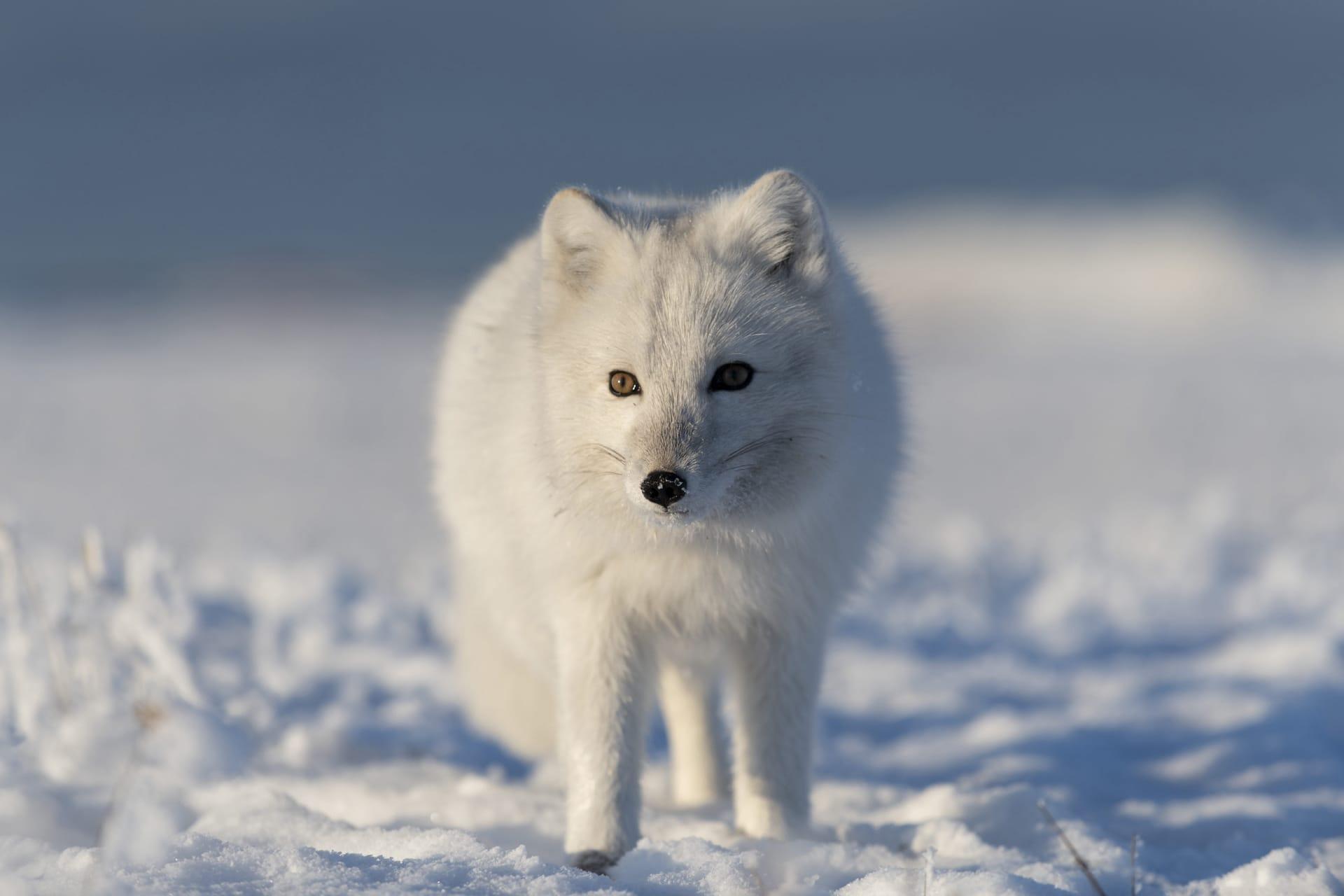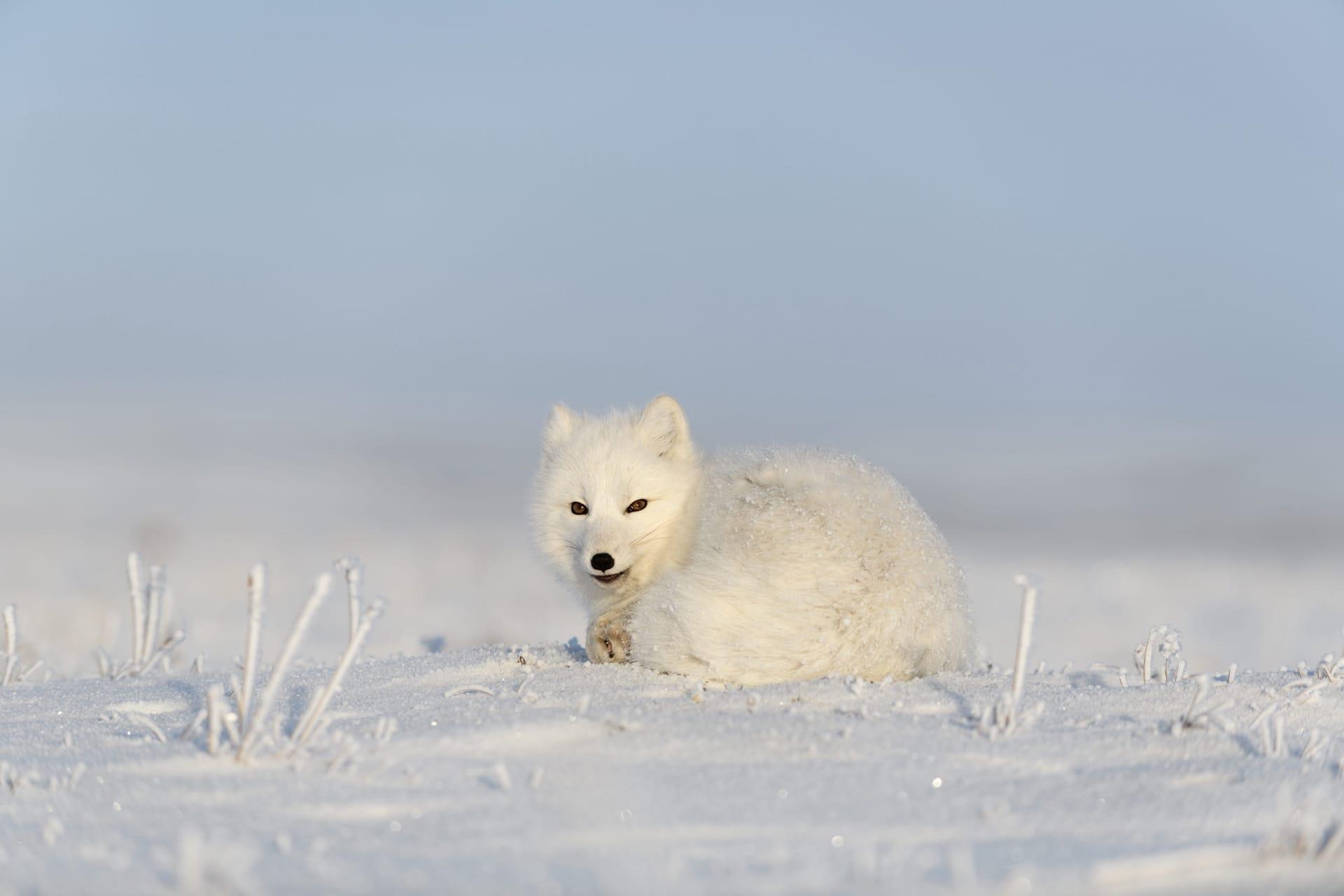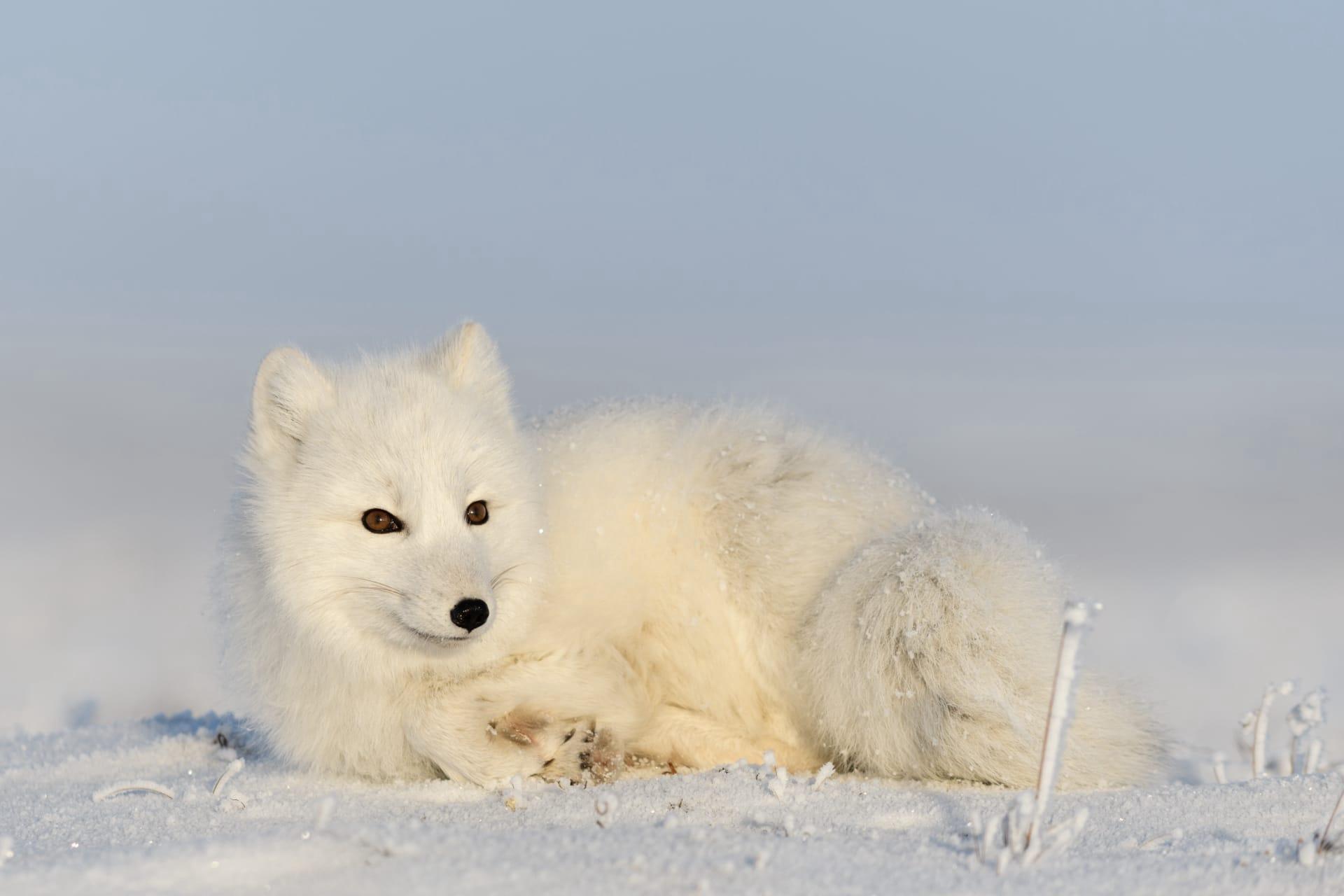Arctic Fox Characteristics
- Home /
- Mini Encyclopedia /
- Animal /
- Arctic Fox Characteristics
1
The Arctic Fox, scientifically known as Vulpes lagopus, is a small yet resilient species found in the icy realms of the Arctic. These foxes typically weigh between 6 to 17 pounds, and their body length can range from 18 to 26.75 inches, with a tail adding another 11 to 13.75 inches. One of the most striking aspects of their appearance is their thick, multi-layered fur coat, which not only provides insulation but also changes color with the seasons – from white in winter to brown or gray in summer for camouflage. The average lifespan of an Arctic Fox in the wild is about 3 to 6 years, though in captivity, they can live up to 14 years.
One of the most distinctive organs of the Arctic Fox is its highly adapted ears. Unlike other fox species, the ears of an Arctic Fox are small and rounded. This shape is crucial for minimizing heat loss in the frigid Arctic environment. Furthermore, their ears possess an acute sense of hearing, enabling them to detect the faintest sounds of prey moving under the snow. This ability is vital for their survival, as it aids in locating and capturing prey buried beneath the snow-covered ground, a key aspect of their hunting strategy in the harsh Arctic conditions.

2
Question: How does the Arctic Fox survive the extreme cold of the Arctic environment?
Answer: The Arctic Fox is exceptionally adapted to thrive in the extreme cold of the Arctic. Its most notable adaptation is its thick fur, which is among the warmest of any mammal. This fur provides excellent insulation, helping to maintain body heat in temperatures that can plummet to -58°F. Additionally, the Arctic Fox has a compact body shape, with short legs, ears, and muzzle, reducing the surface area exposed to the cold. They also have a unique circulatory system in their paws, which keeps their feet warm and prevents frostbite. This system involves countercurrent heat exchange, where warm arterial blood warms the cooler venous blood returning to the body, ensuring that their extremities stay warm without losing significant body heat.

3
Arctic Foxes are known for their agility and endurance in their movement. They are capable of running at speeds up to 30 miles per hour, and their compact, powerful legs allow them to leap significant distances. This agility is particularly useful when navigating the rugged and icy terrain of the Arctic. Additionally, they have a keen sense of balance, which helps them to move swiftly across snow and ice, avoiding predators and seeking prey.
In terms of hunting and feeding, Arctic Foxes are opportunistic predators and scavengers. Their diet primarily consists of small mammals like lemmings and voles, but they also eat birds, fish, and various invertebrates. In winter, when these food sources are scarce, they are known to follow polar bears to scavenge on leftover kills. Arctic Foxes use a unique hunting technique called 'mousing.' They listen for the sounds of prey under the snow and then leap high into the air, pouncing through the snow layer to catch their prey unaware beneath it.

4
The Arctic Fox inhabits some of the most frigid environments on Earth, primarily found in the Arctic tundra biome. This region is characterized by its cold desert-like conditions, with low temperatures, little precipitation, and permafrost. The landscape varies from flat, wide-open spaces to rocky outcrops. Despite these harsh conditions, Arctic Foxes have adapted remarkably well, with their fur changing color to blend in with the seasonal landscape – white for snowy winters and brown or gray for the summer months when the snow has melted.
Reproduction is a vital part of the Arctic Fox's life cycle. These foxes are monogamous, and mating season occurs once a year, from February to June. The female gives birth to a large litter, usually consisting of 5 to 10 pups, but can be as many as 25, which is the largest litter size in the order Carnivora. The dens, often used for generations, are complex structures with multiple entrances and chambers. Both parents take part in raising the young, with the male providing food for the female and pups. The pups are weaned at about 2-3 weeks and leave the den to start their independent life at around 4 months.

5
Book: "The Arctic Fox: Life at the Top of the World" by Garry Hamilton. This Canadian book, published in the early 2000s, delves into the remarkable life of the Arctic Fox. Hamilton, with his engaging narrative, captures the essence of these creatures in their natural habitat. He discusses their survival strategies, reproductive behaviors, and the challenges they face due to climate change. The book also includes stunning photographs that bring the text to life, offering readers a visual journey through the Arctic tundra.
Book: "Arctic Foxes: Masters of the Ice and Snow" by Rebecca E. Hirsch. Published in the United States around the 2010s, this book is geared towards a younger audience but is equally informative for adults. Hirsch provides a detailed overview of the Arctic Fox's life, emphasizing their adaptations to the cold, their hunting techniques, and their role in the Arctic ecosystem. The book combines scientific facts with an accessible writing style, making it an excellent introduction to this fascinating species.